APC 2009 Annual Report Download - page 59
Download and view the complete annual report
Please find page 59 of the 2009 APC annual report below. You can navigate through the pages in the report by either clicking on the pages listed below, or by using the keyword search tool below to find specific information within the annual report.-
 1
1 -
 2
2 -
 3
3 -
 4
4 -
 5
5 -
 6
6 -
 7
7 -
 8
8 -
 9
9 -
 10
10 -
 11
11 -
 12
12 -
 13
13 -
 14
14 -
 15
15 -
 16
16 -
 17
17 -
 18
18 -
 19
19 -
 20
20 -
 21
21 -
 22
22 -
 23
23 -
 24
24 -
 25
25 -
 26
26 -
 27
27 -
 28
28 -
 29
29 -
 30
30 -
 31
31 -
 32
32 -
 33
33 -
 34
34 -
 35
35 -
 36
36 -
 37
37 -
 38
38 -
 39
39 -
 40
40 -
 41
41 -
 42
42 -
 43
43 -
 44
44 -
 45
45 -
 46
46 -
 47
47 -
 48
48 -
 49
49 -
 50
50 -
 51
51 -
 52
52 -
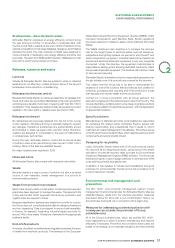 53
53 -
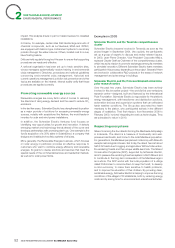 54
54 -
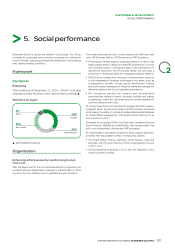 55
55 -
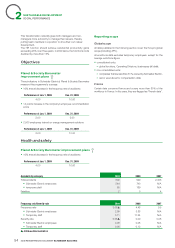 56
56 -
 57
57 -
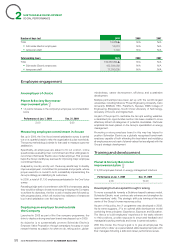 58
58 -
 59
59 -
 60
60 -
 61
61 -
 62
62 -
 63
63 -
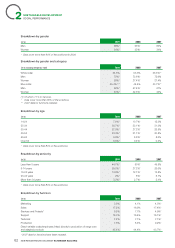 64
64 -
 65
65 -
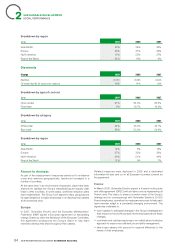 66
66 -
 67
67 -
 68
68 -
 69
69 -
 70
70 -
 71
71 -
 72
72 -
 73
73 -
 74
74 -
 75
75 -
 76
76 -
 77
77 -
 78
78 -
 79
79 -
 80
80 -
 81
81 -
 82
82 -
 83
83 -
 84
84 -
 85
85 -
 86
86 -
 87
87 -
 88
88 -
 89
89 -
 90
90 -
 91
91 -
 92
92 -
 93
93 -
 94
94 -
 95
95 -
 96
96 -
 97
97 -
 98
98 -
 99
99 -
 100
100 -
 101
101 -
 102
102 -
 103
103 -
 104
104 -
 105
105 -
 106
106 -
 107
107 -
 108
108 -
 109
109 -
 110
110 -
 111
111 -
 112
112 -
 113
113 -
 114
114 -
 115
115 -
 116
116 -
 117
117 -
 118
118 -
 119
119 -
 120
120 -
 121
121 -
 122
122 -
 123
123 -
 124
124 -
 125
125 -
 126
126 -
 127
127 -
 128
128 -
 129
129 -
 130
130 -
 131
131 -
 132
132 -
 133
133 -
 134
134 -
 135
135 -
 136
136 -
 137
137 -
 138
138 -
 139
139 -
 140
140 -
 141
141 -
 142
142 -
 143
143 -
 144
144 -
 145
145 -
 146
146 -
 147
147 -
 148
148 -
 149
149 -
 150
150 -
 151
151 -
 152
152 -
 153
153 -
 154
154 -
 155
155 -
 156
156 -
 157
157 -
 158
158 -
 159
159 -
 160
160 -
 161
161 -
 162
162 -
 163
163 -
 164
164 -
 165
165 -
 166
166 -
 167
167 -
 168
168 -
 169
169 -
 170
170 -
 171
171 -
 172
172 -
 173
173 -
 174
174 -
 175
175 -
 176
176 -
 177
177 -
 178
178 -
 179
179 -
 180
180 -
 181
181 -
 182
182 -
 183
183 -
 184
184 -
 185
185 -
 186
186 -
 187
187 -
 188
188 -
 189
189 -
 190
190 -
 191
191 -
 192
192 -
 193
193 -
 194
194 -
 195
195 -
 196
196 -
 197
197 -
 198
198 -
 199
199 -
 200
200 -
 201
201 -
 202
202 -
 203
203 -
 204
204 -
 205
205 -
 206
206 -
 207
207 -
 208
208 -
 209
209 -
 210
210 -
 211
211 -
 212
212 -
 213
213 -
 214
214 -
 215
215 -
 216
216 -
 217
217 -
 218
218 -
 219
219 -
 220
220 -
 221
221 -
 222
222 -
 223
223 -
 224
224 -
 225
225 -
 226
226 -
 227
227 -
 228
228 -
 229
229 -
 230
230 -
 231
231 -
 232
232 -
 233
233 -
 234
234 -
 235
235 -
 236
236 -
 237
237 -
 238
238 -
 239
239 -
 240
240 -
 241
241 -
 242
242 -
 243
243 -
 244
244
 |
 |

2009 REGISTRATION DOCUMENT SCHNEIDER ELECTRIC 57
SUSTAINABLE DEVELOPMENT
2
SOCIAL PERFORMANCE
In 2009, more than 40% of the Group’s employees had been through
the performance review process and received a corresponding skills
development plan.
Schneider Electric offers an appealing array of training options,
including leadership programmes at Schneider Electric University
and through partnerships with such prestigious institutions as
Harvard Business School and HEC. Employees also have access
to training in specifi c skill-sets through courses developed by the
Group’s global skills centres (marketing and sales, human resources,
fi nance, manufacturing and supply chain operations), as well as to
more general training.
All of these programmes are offered according to the same basic
format, combining standard classroom training with e-learning.
Courses are held at fi ve in-house training centres , located in Chicago
and Boston in the US, Rueil-Malmaison and Grenoble in France,
Beijing in China and Bangalore in India.
As part of the One Team initiative, customised e-learning modules
were launched in 2009 to provide employees and managers with
training-on-demand solutions for such strategic topics as energy
effi ciency, the Group’s values, gender diversity, health and safety and
talent management. With one such module, the Group was able to
certify the energy effi ciency knowledge of 10,000 employees. Unique
to the organisation , these modules represent a strong addition to an
e-learning offering of more than 100 courses, all of which are adapted
to the Group’s specifi c needs.
Training budget by type of training
(in %) 2009 2008 2007
Health, safety and environment 9.9%* 8.2%* 6%
Technical 33.5%* 27.5%* 26%
Foreign languages and IT 14.9%* 17.8%* 17%
Management and leadership 26.2%* 25.6%* 30%
Other 15.5%* 20.9%* 21%
* Data cover more than 80 % of the workforce.
Training by category
(in %) 2009 2008 2007
Training costs
White collar 75%* 77%* 79%
Blue collar 25%* 23%* 21%
Number of hours
White collar 62%* 68%* 72%
Blue collar 38%* (2) 32%* (1) 28%
* D ata cover more than 80 % of the workforce.
(1) Data include service DVC headcount, 11% of all DVC .
(2) Data include service DVC headcount, 14% of all DVC .
Average number of hours of training per employee
(in hour ) 2009 2008 2007
White collar 29* 36* 34
Blue collar 19* 19* 17
* D ata cover more than 80 % of the workforce.
The average number of hours of training per employee is 24. 3▲ in 2009 as comparated to 28.6 hours in 2008 .
▲ 2009 audited indicators
